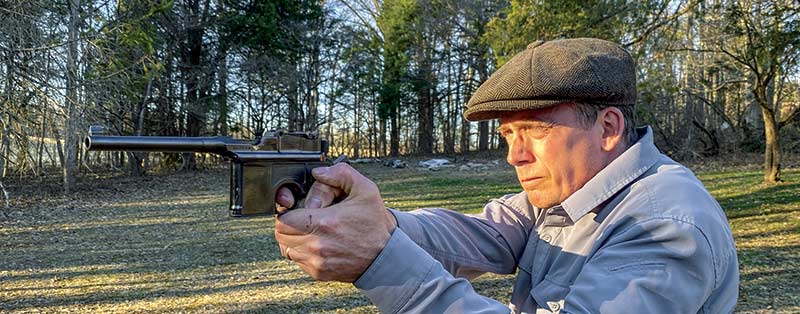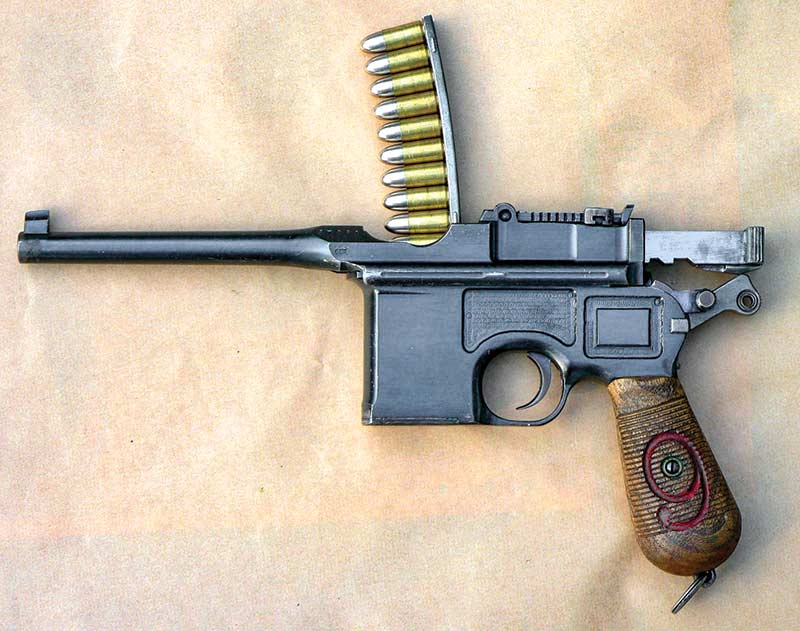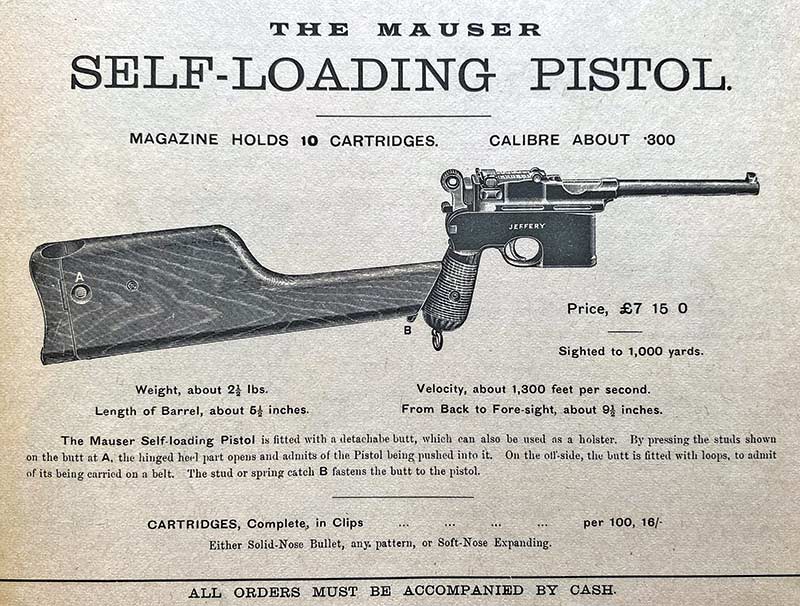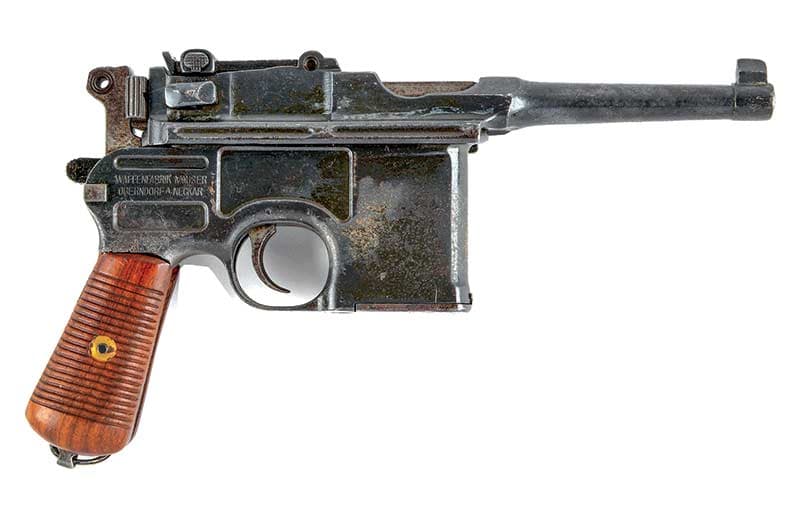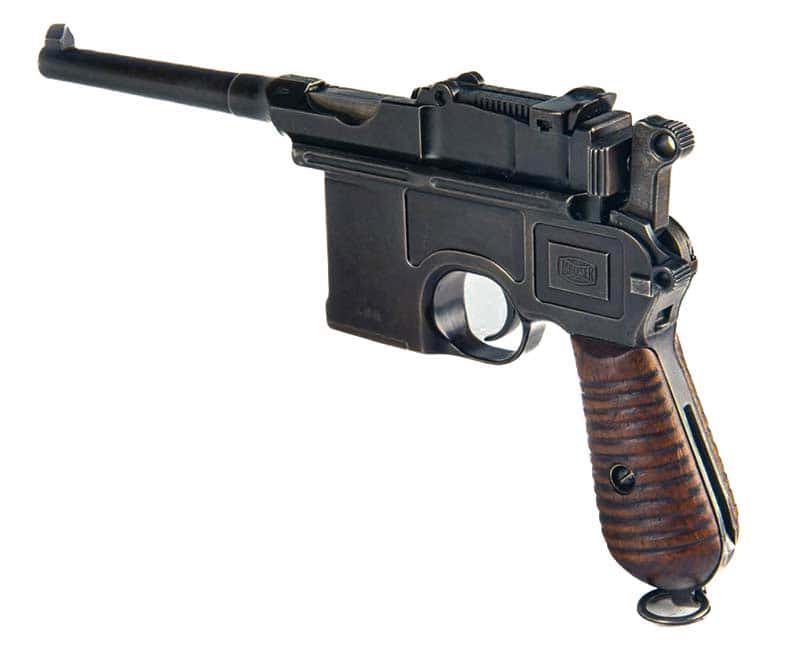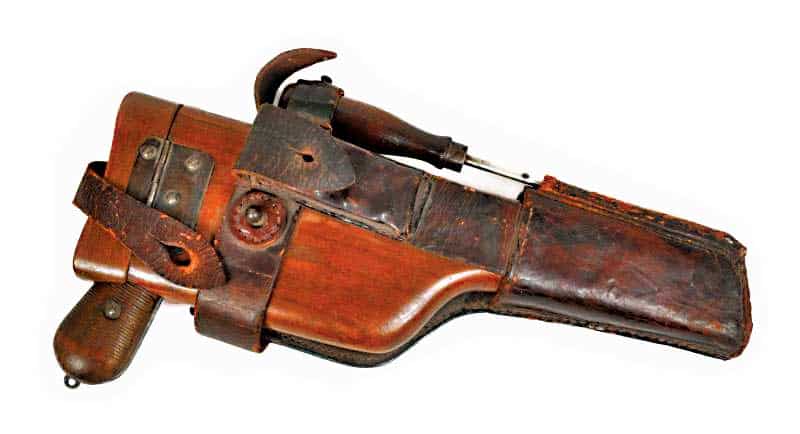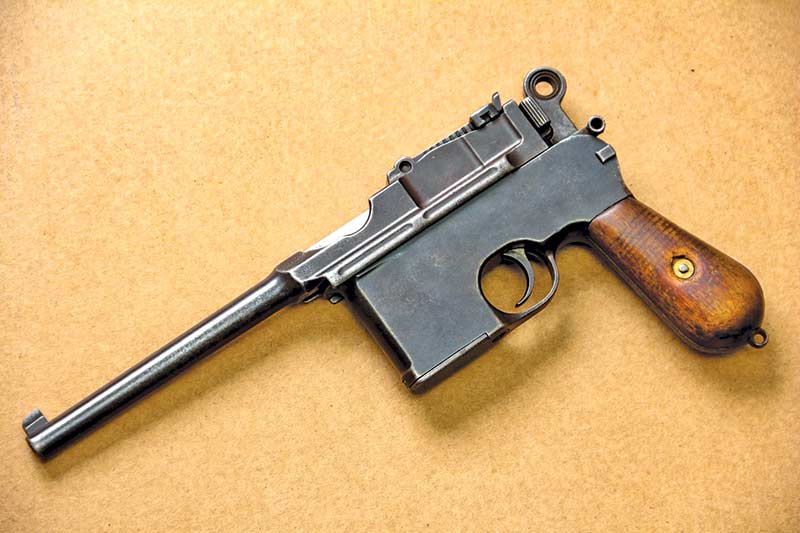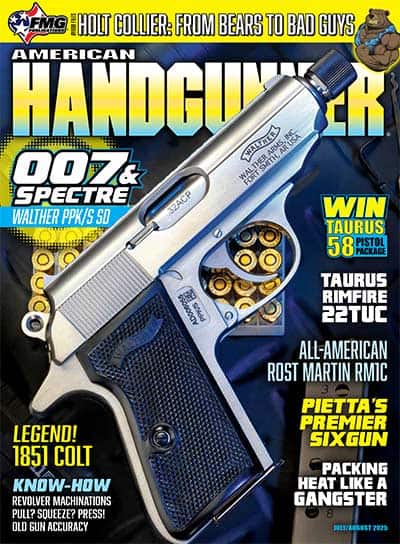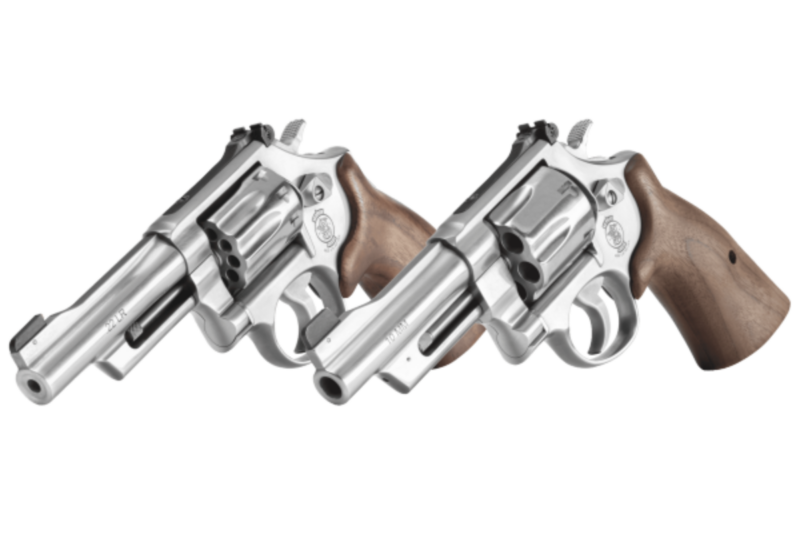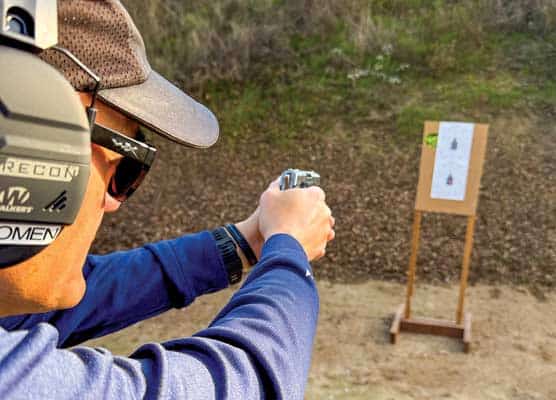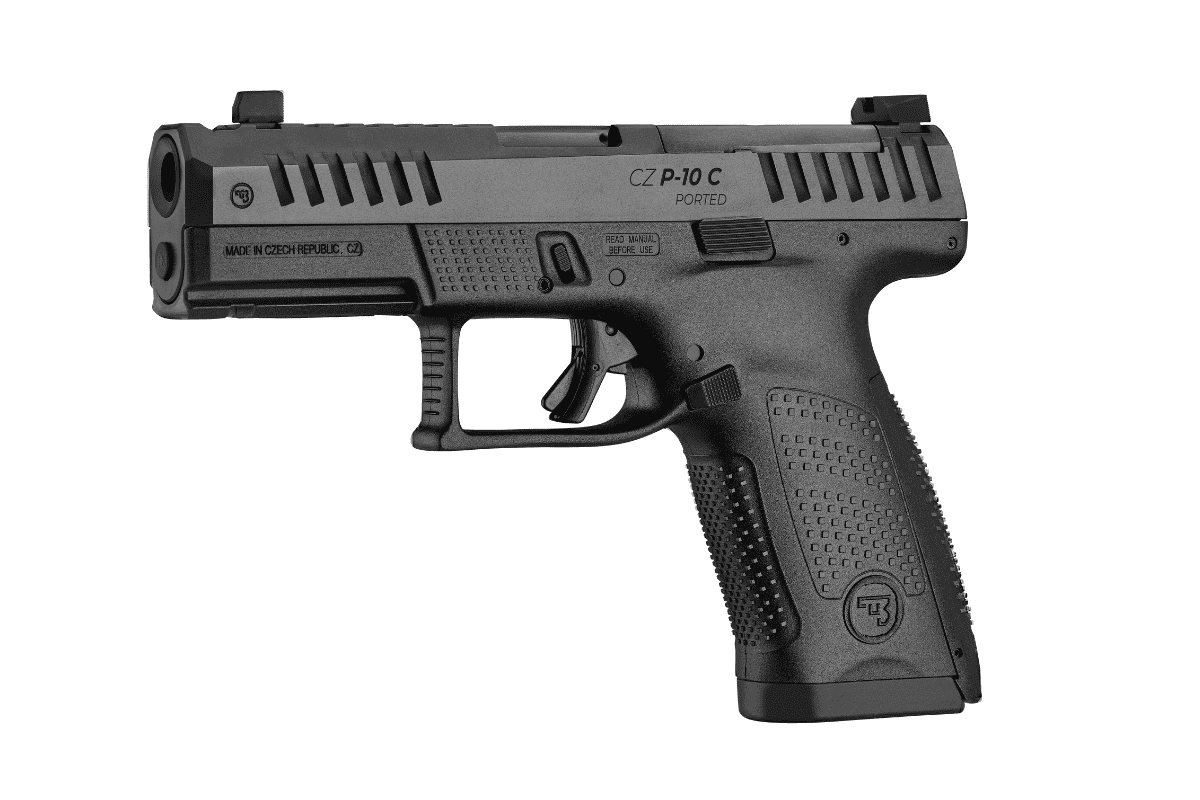The Mauser C96
Broomhandle Pistol
An Extraordinary Long Life
First offered for sale in 1897, the Mauser C96 was a standout among its first-generation self-loading pistol peers. For starters, it was a genuine and immediate commercial success in the late 19th century and continued to be a solid seller beyond the brief period before superior designs, like those of John Moses Browning, demonstrated its obsolescence. In its first three years of production before 1900, about 19,632 Mauser C96 pistols were sold. If you added up the total production of all the first-generation autoloaders, I suspect they wouldn’t exceed Mauser’s C96 sales before the turn of the century. In 1899, Mauser even got a military contract for 5,000 pistols from the Italian Navy.
What I find most noteworthy about the C96 is that the basic design remained in production for 40 years, with the last guns coming off the Mauser assembly line in 1937. Mauser made around 1,150,000 guns across several models. No nation ever adopted the C96 as the standard issue sidearm of its military forces, but the pistols saw extensive wartime service around the world anyway. Prior to WWI, Mauser’s military and police contracts never surpassed their initial Italian Navy M1899 contract. Persia bought 1,000 guns, as did Turkey (reportedly for the Sultan’s palace guards), but an occasional sale of a few hundred guns to law enforcement agencies here and there around the world was more typical.
Prior to 1916, most of the C96 pistols sold annually went through ordinary commercial channels to private civilian buyers, but probably not quite the same civilian buyers that were attracted to the arguably more popular FN Model 1899/1900. They were very different pistols in ways best appreciated by professionally minded men solely responsible for their own survival in seriously life-threatening places and circumstances who expected to kill dangerous men, and, to a lesser degree, dangerous animals.
Target Customer
The FN Model 1899, chambered in .32 ACP with a 7-round detachable magazine, was really a pocket pistol that got adopted for Belgian military service as the M1900. However, then as now, the military generally considers a handgun to be a back-up personal defense weapon of last resort.
By contrast, the C96 with its powerful .30 Mauser chambering,10-round, stripper clip-loaded magazine, long-range adjustable sights, and combination wooden belt holster and detachable carbine buttstock, has a distinctly offensive character and versatility that appealed to military officers, professional hunters, adventurers and explorers of all nationalities. Young Winston Churchill, as a cavalry officer in the British 21st Lancers, fought with his C96 at the Battle of Omdurman in Sudan in 1898. British Army officers were particularly fond of the C96 and bought them for service in the Second Boer War (1899-1902). The famous elephant hunter W.M.D. “Karamojo” Bell carried one chambered in the powerful 9mm Export (9 x 23mm) in Africa to discourage hostile tribesmen. T.E. Lawrence (Lawrence of Arabia) used one on campaign during WWI.
Mauser Power
Even by today’s standards, the .30 Mauser is a powerful cartridge. It drove an 86- to 89-grain bullet around 1,400 feet per second (fps) making it the highest velocity pistol cartridge until 1937 when the .357 Magnum was introduced. The flat shooting .30 Mauser had great range, bone smashing penetration, and its bottleneck cartridge case fed reliably. From the typical 5.5″ C96 barrel it has 397 foot-pounds of energy at the muzzle. Browning’s .32 ACP, a cartridge that would prove itself vastly more popular around the world for military and police as well as civilian handgun use through WWII, had a 71-grain bullet moving 984 fps generating only 158 foot-pounds of energy at the muzzle. That’s about what the .30 Mauser has after traveling 300 yards, which hints at what Mauser had in mind for the C96.
The C96 was designed with the capability to engage targets at ranges normally reserved for long guns. The grip frame is slotted for the attachment of the holster/buttstock. The extra stability you get from the buttstock steadies the aim and helps control recoil, making fast hits on man-sized targets 50 yards distant a snap from the standing position. Its sights are essentially identical to those on the Mauser rifle, but graduated only to 1,000 meters and with a 9.75″ sight radius on the standard 5.5″ barrel pistol. Considering how small targets look at 500 yards with the naked eye, I don’t see the C96 being much use for anything other than area fire at that range. W.M.D. Bell claimed he laid down harassing fire out to 600 yards to drive off menacing natives. Practically speaking, a C96 with the buttstock attached is a decent semi-auto carbine capable of engaging targets inside 200 yards. There are many wartime photographs showing it used in exactly that way.
War Interest
It wasn’t until WWI that the German military took a serious interest in the C96. After the staggering losses they suffered in men and materiel in the first year of fighting, it was clear production of the P-08 Luger pistol could not keep up with demand. Between the German governments of Prussia and Wurttemberg and the Austria-Hungary government (Austro-Hungarian Empire), approximately 173,000 C96 pistols were purchased to fill the gap. Wartime demand always boosted C96 Mauser sales, but military procurement contracts had always been small before WWI. The conflict marked a dramatic increase in the scale and destruction of warfare previously unseen, and unexpected.
After WWI, the C96 sales shifted notably from individual buyers toward foreign governments with both direct purchases and sales through arms dealers. More modern handguns were available, but the big Mauser clearly had a following, especially among the Russians who were one of their biggest and earliest post-war customers for it. Both Czarist and Bolshevik forces fighting the Russian Civil War used them in large numbers. The Chinese warlords of the 1920s and early 1930s, became be Mauser’s biggest customers for the big pistol. It’s estimated that as many as 300,000 pistols, mostly new production, including a substantial number of select-fire models, ultimately went to China’s private armies.
The Russians seem to have loved the C96 and bought substantial numbers of the new, smaller gripped, 4″ barrel, Model 1920. So many in fact that it quickly got nicknamed the Bolo model. In the case of the Chinese warlords, if they didn’t love the C96 too, they at least liked it and trusted its quality and reputation. A more important factor was the export of military long arms to China was banned while the export of pistols wasn’t. The C96 with buttstock was as close to a modern long gun as a pistol could get at that time.
In any case, they made extensive use of them, and manufactured at least 30,000 unlicensed copies domestically. The Chinese demand for C96 pistols was so great the Spanish firms of Astra and Royal started making their own unlicensed variants. They produced around 67,000, but not quickly enough to take advantage of the lucrative Chinese market. Most of these guns would see battle in the Spanish Civil War from 1936 to 1939.
The Mauser C96 was called to service as a stop-gap weapon in both world wars. In 1930, it was somewhat simplified to reduce manufacturing cost and standardized by the company as the Model 1930 Commercial. This last semi-auto C96 variant was successfully converted into a detachable magazine select-fire by 1932 that was very popular in China. The German Army also purchased it in limited numbers, designating it the M712. The cyclic rate was a ripping 900 rounds per minute, but with the shoulder stock attached, the weapon was controllable and it served in the sub-machinegun role until purpose-built submachine guns like the MP38 and MP40 could be fielded in sufficient numbers to replace it. Finally, in 1940 the German Luftwaffe bought 7,800 of the Model 1930 Commercial pistols. Mauser ended production in 1937 but still had enough inventory on hand to fill the order.

